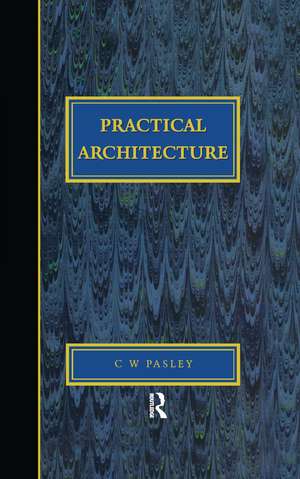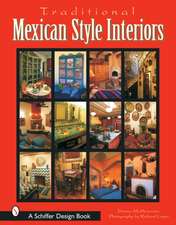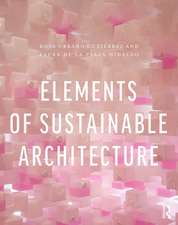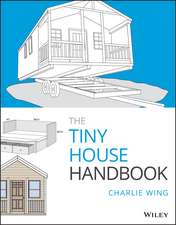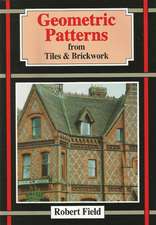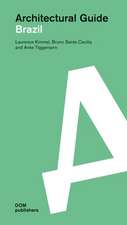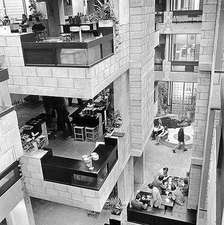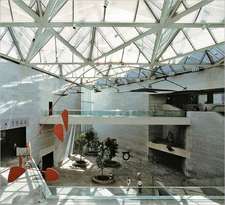Practical Architecture: Brickwork, Mortars and Limes
Autor Cw Pasleyen Limba Engleză Hardback – mai 2001
Preț: 787.97 lei
Preț vechi: 960.94 lei
-18% Nou
Puncte Express: 1182
Preț estimativ în valută:
150.78€ • 157.82$ • 125.50£
150.78€ • 157.82$ • 125.50£
Carte tipărită la comandă
Livrare economică 31 martie-14 aprilie
Preluare comenzi: 021 569.72.76
Specificații
ISBN-13: 9781873394472
ISBN-10: 1873394470
Pagini: 288
Dimensiuni: 138 x 216 mm
Greutate: 0.61 kg
Ediția:1
Editura: Taylor & Francis
Colecția Routledge
Locul publicării:Oxford, United Kingdom
ISBN-10: 1873394470
Pagini: 288
Dimensiuni: 138 x 216 mm
Greutate: 0.61 kg
Ediția:1
Editura: Taylor & Francis
Colecția Routledge
Locul publicării:Oxford, United Kingdom
Public țintă
Professional and Professional Practice & DevelopmentCuprins
Preliminary observations; bricks; lime; mortar; grout; lime putty; pargetting; cements in general; gypsum; gueesh; water cements in general; puzzolana; tarras; Roman cement; the Harwich cement; basalt cement; the cement obtained from forge scales or calcined ironstone; coal-ash mortar; tile-dust cement; mastic; Remarks on obtaining water cements by artificial means; mortar for oven, furnaces, etc.; the foundation of buildings in good soil; the footings of brick walls; the foundations of buildings in unfavourable soil, piled foundations explained; arches, and more especially of inverted arches, as applied to foundations; the use of grouted gravel, or other small materials in buildings, and especially in foundations; Rules for judging of the quality of bricks; the manner in which bricks ought to be laid, the term bond in masonry or brickwork defined; English bond, as it has been defined in some books of architecture; common English bond; a variety of common English bond, in which the use of closers is dispensed with; heading bond; Flemish bond; the common single Flemish bond, now generally used in buildings for all external walls exceeding one brick in thickness; the common double Flemish bond; those particulars in which English and Flemish bond agree; that English bond ought in all cases to have the preference to Flemish bond; diagonal bond; the arrangement most suitable for the brick revetments of fortresses; the bond proper for cross walls or party walls of buildings, and which also applies to external re-entering angles, when English bond only is used; the external re-entering angles of buildings when Flemish bond is used; the openings of external doors and windows in plain brick fronts; the mode of finishing the brickwork of doors and windows having square jambs with reveals; the mode of finishing the brickwork of windows having splayed jambs with reveals; window sills and backs; external recesses of brickwork; blank recesses in brick walls; brick piers; square piers, built according to English bond; piers for gateways, built according to English bond; piers built according to Flemish bond; brick pilasters; horizontal projections, and offsets not connected with the foundation in brick walls; brick arches; External or camber brick arches, as applied to doors and windows of buildings; plain brick arches defined; plain brick arches having a radius of curvature not exceeding three or four feet; plain nine-inch brick arches having a radius of curvature of from six to ten feet; plain arches one brick and a-half in thickness; plain arches of two bricks or more in thickness, such as are used for casemates, etc.; the intermixture of thorough bonding courses in arches of two bricks or more in thickness; the same principles applied to the construction of parabolic arches; ornamental arches of two bricks or upwards, such as are sometimes used for concealing the extremities of plain arches; arch bricks, or bricks moulded to the arch-like form; description of the arches used in the casements at the Citidel of Quebec, and at Dover; groined arches; the bond of groined brick arches, with preliminary remarks on the centering of arches; coved arches; plain arches, as applied to common brick buildings; general remarks on the proportions of arches; the proper proportions of the piers and abutments of semicircular arches; observations on the foundations of arches, and on the pressure of earth against their abutments; the proper thickness of common arches, and the action of variable weights upon them, peculiar property of arches in the face of a wall; general remarks on great arches; cones, such as are used for tile kilns, etc.; domes; light arches in general, and or those used in the south of France in particular; the use of pots, or hollow earthenware cones in arches, A description of light ceilings formed in this manner; supplementary remarks on arch bricks, or bricks moulded to the arch like form; general remarks on the chimneys of buildings; the rules now usually followed, in respect to the construction of fireplaces, chimneys, etc.; the dimensions proper for the flues of chimneys; the dimensions proper for common fireplaces; the dimensions proper for the fireplaces of kitchens; rules for determining the dimensions of chimney breasts; the common method of executing the brickwork of chimneys, with remarks on the propriety or using cement instead of common mortar, and pargetting; the brick bond proper for the shafts of chimneys, when the boundary withs are one brick thick; the brick bond, proper for the shafts of chimneys, having all their withs half brick thick; varieties in regard to the arrangement and construction of chimney; chimney-pots, cowls or turncaps; remarks on the difficulties attending the subject of smoky chimneys, account of some expedients for relieving this nuisance; Mr Hiort's improved system of chimneys described; other methods of heating and ventilating apartments, that have been proposed; the connection between the brickwork of buildings, with a general description of chain timbers and wall plates; the bond timbers commonly used in walls, remarks on the disadvantages of the common practice of inserting an excess of woodwork into the walls of buildings in this country, brief notice of the improved system recently adopted by some eminent architects; securing the ground floors of brick buildings against damp, the peculiar precautions necessary for the foundations and floors of powder magazines; securing the interior of brick buildings against damp, the use of battening to prevent damp from penetrating through external walls; description of the hollow brick walls sometimes adopted as a security against damp; securing brick walls against the effects of rain penetrating vertically downwards; securing brick walls against the continued action of water, that this can be effected by cement alone, experiments and observations, tending to prove that common lime mortar is improper, even for the backing of brick walls exposed in front to the continued action of water; Correction of an inaccuracy in the preceding article, in consequence of further experience on the subject, that not only Aberthaw lime, but the blue lias of Lyme Regis, and the Dorking lime may be considered as cements and used accordingly; securing the revetments of fortresses against the effects of wet; the preservation of the brickwork of arches against damp. That pure cement should be used for the internal lining of cisterns, and for the external coating of casements; the thickness proper for the external wars of brick building; the thicknesses proper for the internal walls of brick buildings; practical examples of the thicknesses of the walls of buildings actually constructed; further remarks on the thickness proper for the walls of brick buildings; the thicknesses proper for brick walls of inclosure; practical examples of the thickness of walls of inclosure; brick ornaments; preparing brickwork for an ornamental front of cement; the mixture of brickwork with flints, or with small stone rubble in building; the mixture of brickwork with stone ashlar in building; the connection of the brickwork of buildings with staircases of wood or stone; the execution of the brickwork of buildings, etc.; the pointing of brickwork; brick drains and sewers; the tools and implements used in the execution of brickwork; the tools and implements used for making gauged arches; tools and implements for pointing brickwork; tools and implements for building slopes in brickwork; tools and implements for cutting into brickwork; tools and implements used in making mortar; scaffolding; machines necessary for raising bricklayer's materials in the construction of a building; the measurement of brickwork; extra charges allowed for the nicer parts of bricklayer's work; contracts and estimating; index.
Descriere
Offers information on how buildings were being constructed a hundred and fifty years ago, and the type of limes and cements that were used. This title examines the bonds in brickwork and provides coverage of different types of arches and how they are formed. It is suitable for architects, surveyors and structural engineers.
